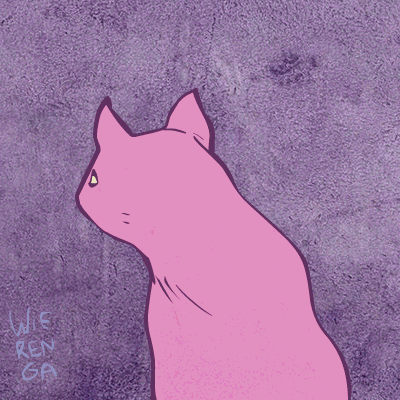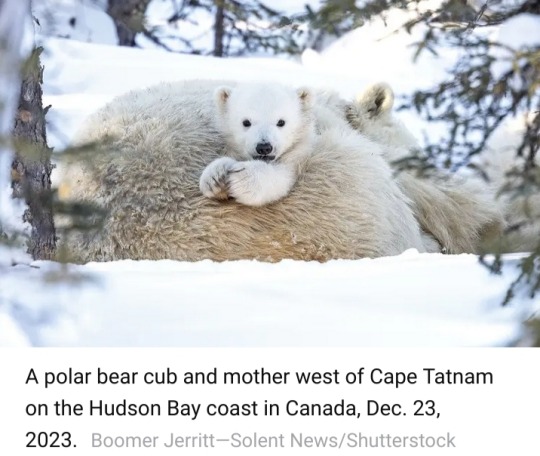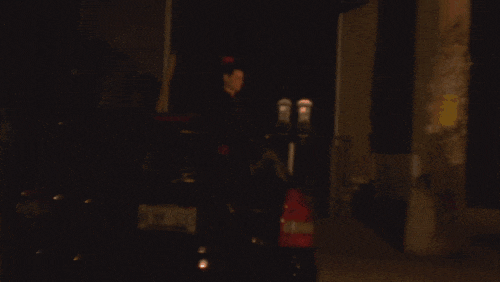#Community Health Nursing in Canada
Explore tagged Tumblr posts
Text
"How will people get healthcare?
(...)
During the Spanish Civil War, Barcelona’s Medical Syndicate, organized largely by anarchists, managed 18 hospitals (6 of which it had created), 17 sanatoria, 22 clinics, 6 psychiatric establishments, 3 nurseries, and one maternity hospital. Outpatient departments were set up in all the principal localities in Catalunya. Upon receiving a request, the Syndicate sent doctors to places in need. The doctor would have to give good reason for refusing the post, “for it was considered that medicine was at the service of the community, and not the other way round.”[40] Funds for outpatient clinics came from contributions from local municipalities. The anarchist Health Workers’ Union included 8,000 health workers, 1,020 of them doctors, and also 3,206 nurses, 133 dentists, 330 midwives, and 153 herbalists. The Union operated 36 health centers distributed throughout Catalunya to provide healthcare to everyone in the entire region. There was a central syndicate in each of nine zones, and in Barcelona a Control Committee composed of one delegate from each section met once a week to deal with common problems and implement a common plan. Every department was autonomous in its own sphere, but not isolated, as they supported one another. Beyond Catalunya, healthcare was provided for free in agrarian collectives throughout Aragon and the Levant.
Even in the nascent anarchist movement in the US today, anarchists are taking steps to learn about and provide healthcare. In some communities anarchists are learning alternative medicine and providing it for their communities. And at major protests, given the likelihood of police violence, anarchists organize networks of volunteer medics who set up first aid stations and organize roving medics to provide first aid for thousands of demonstrators. These medics, often self-trained, treat injuries from pepper spray, tear gas, clubs, tasers, rubber bullets, police horses, and more, as well as shock and trauma. The Boston Area Liberation Medic Squad (BALM Squad) is an example of a medic group that organizes on a permanent basis. Formed in 2001, they travel to major protests in other cities as well, and hold trainings for emergency first aid. They run a website, share information, and link to other initiatives, such as the Common Ground clinic described below. They are non-hierarchical and use consensus decision-making, as does the Bay Area Radical Health Collective, a similar group on the West Coast.
Between protests, a number of radical feminist groups throughout the US and Canada have formed Women’s Health Collectives, to address the needs of women. Some of these collectives teach female anatomy in empowering, positive ways, showing women how to give themselves gynecological exams, how to experience menstruation comfortably, and how to practice safe methods of birth control. The patriarchal Western medical establishment is generally ignorant of women’s health to the point of being degrading and harmful. An anti-establishment, do-it-yourself approach allows marginalized people to subvert a neglectful system by organizing to meet their own needs.
After Hurricane Katrina devastated New Orleans, activist street medics joined a former Black Panther in setting up the Common Ground clinic in one of the neediest neighborhoods. They were soon assisted by hundreds of anarchists and other volunteers from across the country, mostly without experience. Funded by donations and run by volunteers, the Common Ground clinic provided treatment to tens of thousands of people.
The failure of the government’s “Emergency Management” experts during the crisis is widely recognized. But Common Ground was so well organized it also out-performed the Red Cross, despite the latter having a great deal more experience and resources.[41] In the process, they popularized the concept of mutual aid and made plain the failure of the government. At the time of this writing Common Ground has 40 full-time organizers and is pursuing health in a much broader sense, also making community gardens and fighting for housing rights so that those evicted by the storm will not be prevented from coming home by the gentrification plans of the government. They have helped gut and rebuild many houses in the poorest neighborhoods, which authorities wanted to bulldoze in order to win more living space for rich white people."
-Peter Gelderloos, "Anarchy Works" (2010)
137 notes
·
View notes
Text
The thing that really gets me about humanity is the kindness that follows tragedy and coming together as a community and loving each other
When the Titanic sank, the Carpathia raced to provide any help they could. They didn't have to, certainly, no one expected them to, but they did
and when the Mont Blanc exploded in Halifax, Nova Scotia, Canada one man Patrick Coleman went back to his post to warn the railways to stop the trains preventing hundreds from dying
on 9/11 there were 38 planes that had nowhere to land so the Air traffic controllers had them land in Canada in a small town called Gander and all the people there banded together to provide shelter and food for all the 6,000+ passengers on the planes
in a small town in Minnesota, USA 20 people lined up to give CPR to a man who had had a heart attack until paramedics could arrive and saved his life because of it
thousands of years ago somebody cared for a person who had broken their leg, which would usually be a fatal injury, and nursed them back to health
every tragedy has a kindness in it, people helping others in the face of loneliness, desperation, and destruction
and then there is the kindness we show when no huge tragedy has happened but life has happened instead
An adult in the time of King Tut made in him a tunic with ducks on it and a chest with ducks and sandals and earrings with ducks because he loved them so much
people take time out of their day to help an old person cross the street
chasing after somebody because they dropped something and you are trying desperately to return it
leaving food for homeless people
caring for others through an illness
and then there is the community
humans banding together
singing together, a sad tragic song and making it happy and soothing because they are singing it together
humans coming together to let someone buy back their farm at auction
helping one another, being kind and loving each other in the face of tradegy and despair this is what it means to be human
#humans being kind#humanity#minnesota#canada#halifax#king tut#titanic#rms carpathia#i was listening to the come from away soundtrack#and i couldnt stop thinking of all those people#they gave up their time and town for others#people racing to one another#to help and love and be kind#its the very root of humanity#history#9/11#humans being humans
234 notes
·
View notes
Text
Some recent news on the Canadian response to the ongoing COVID-19 pandemic
Medical research series calls on Canada to do independent inquiry into COVID-19 response
A new medical research series calls on Canada to conduct an independent inquiry into the country’s COVID-19 response, citing Canada’s failures in the equity of its domestic and global health deliverance.
The BMJ’s international editor Dr. Jocalyn Clark commissioned the series from Canadian experts to look in-depth into key issues in Canada’s pandemic response, including leadership, co-ordination and data sharing between provincial territorial and federal entities, equity research, the high death rate among nursing homes and Canada’s global contribution to vaccine sharing.
“These in-depth analyses are important because they help draw lessons about what went wrong, where were the missteps, how can these be prevented in the future and how can we be better prepared for the next health crisis or public-health emergency in the future,” Dr. Clark said.
You can access the full series here: https://www.bmj.com/canada-covid-series
Exposing deep institutional failures in the COVID-19 response in Canada
From the start, it was as if government authorities didn’t really want to know, or want us to know, what was happening. They didn’t implement any way of understanding how much infection was circulating in the population, instead relying on people with symptoms to come forward. Then, two years into the pandemic, Ontario ended whatever monitoring and reporting was put in place. These were irresponsible actions in the face of the most devastating public health crisis of the last 100 years.
The absence of data has left the public with the false impression that COVID-19 is no longer a real problem. This is made worse by the shocking lack of clear communication from authorities that the SARS-CoV-2 virus can linger in the air for hours and that it cannot be social-distanced or hand-sanitized away. (emphasis added)
118 notes
·
View notes
Note
May I request a birth scenario for the 2ps. You can do either side first and make 2 separate posts.
There is one ask further up in my ask box asking for the dreaded birth scenario with the 2p axis anyway, so I’ll just be doing the 2p allies for now. Warning for implied non-con, manipulation & coercion. You’re reading this at your own risk.
Yandere 2p! Allies – Dreaded Birth
America

“Not like you have much choice, cupcake”, Allen lazily drawled from his place next to you. He had tidied himself up for the birth, and it was downright surreal to see him in a blue overall with a hairnet and mask. Exhausted as you were from pressing the baby out, you had nearly not recognised him for a moment.
“You are not the mother of that…”, you began weakly only to be cut off by him.
“Yes, I’m the daddy and you are the mommy and you’ll act the part. Taking care of another human being will be good for your mental health. We talked about this sugar. You are just acting like this because you just had a difficult birth and post-partum depression is already setting in. Plus, you’re anxiety is showing again.”
Allen would quickly see what you are up to and would do his best to stamp it out as soon as possible. He would have possible caught on to your true feelings on the matter long before the deliver would have taken place with how you would be more emotional and prone to lash out in the weeks leading up to the event. As such, he would have a plan in mind to deal with you.
Would either take you to a small country hospital or a hippy commune to have the birth. There, he would either know the people very well, letting him be the more credible person in the room, or it would be a group of complete strangers that wouldn’t care about your fate and therefore have no incentive to intervene.
Would likely give you a joint or cannabis tea afterwards to make you calm down. Promises would be made and he would have a serious heart-to-heart conversation with you, doing his best to sway you. If else, the carrot and the stick will have to do.
Canada

Sighing Mark turned to the midwife, asking: “Mind leaving us alone for a minute? I have to have a word with my wife.”
“Please don’t go”, you stated. “I don’t want to be alone with him.”
Cassidy, as she was called, looked uncertain between you and Mark, not knowing who to heed. She probably also sensed that something foul was afoot, having likely been in similar situations before, situations where not everything was as it seem on the surface.
“I had a fight with my honey-buns before the contractions started. With everything that happened today, she is probs more mad at me than she usually would be.”
“Alright. I’ll just be by the door. When you have finished comforting her, not hesitate to shout”, the woman said somewhat hurriedly, and then scurried out of the room. Typical – she just wanted to believe what he had said, because the alternative would be so extremely troubling. Now you were alone with the wolf.
Mark could do his best to construct the situation as just an unfortunate series of events. Though, because he wouldn’t be the most sociable and suave guys, he would likely leave opening that you could easily exploit. Taking with the nurse a bit or some other person witnessing the awkward scenes, and you could have a very willing accomplice that could help you escape and even testify in court.
Aside from that, would sit on your bed and do a long lecture, while holding the baby in his arms. Would chide you of disturbing the sleep of the little one if you would raise your voice and reprimand you for being so heartless as to rejecting such a cute and helpless thing that would suffer dearly without your aid. If it initially wouldn’t work, then he would have the following weeks to convince you.
China

Zao raised a thin eye-brow, a rather emotional gesture for such a stoic man. Or at least, for when he wasn’t under the influence of anything. Ignoring your protests, he shoved the baby in your arms, forcing you to take it unless the small tumbled to the side of the narrow bed you had just given birth in and smash its head open. The midwives had just finished washing the wax off the pliable body and swaddled the boy in blankets. After handing the father his child, they had all filed out doubtlessly in accordance to some preplanned schedule.
This China wouldn’t leave much room for argument. He would ensure that events would be framed to make sure that out of the two of you, you would be viewed as the evil doer. The people around you would offer you a lot of unsolicited advice on child rearing and ensure that would be doing your job of a dutiful mother. Should you fail on doing that, they would be the ones to lecture you and shame you. That could or couldn’t be Zao’s intentions, yet the outcome would be that you would feel the pressure more acutely, since it wouldn’t just be some crazed faux-lover telling you what to do.
It would be one of those circumstances where he would continuously invite people over, just to force you into the role of mother. Other’s would gossip and look down on you if you wouldn’t, after all.
All the time, would act as if you are not protesting against motherhood – shoving the child in your arms, leaving you alone with him and assigning you the role of primary caretaker. He is not going to feed the boy, would you let the kid starve? You know that you could go to jail for child abuse if you’d do so.
England

Oliver giggled softly, bright blue eyes shining.
“What did you say, poppet?”, he asked brightly. His appearance made you step back. He was covered in blood, your blood to be exact, seeing that he had played midwife.
You had hoped that the deliver would have meant that you would have been allowed to see other people. Sadly, he had deftly dashed your hopes by doing the task himself. It shouldn’t have surprised you – the mere notion of you in somebody else’ arms drove him berserk.
“Nothing, dear”, you answered quietly, feeling tears well up in your eyes.
Oliver wouldn’t hesitate to go full batshit insane if you would ruin his dream of a happy little family. He would desire, no require a sweet little life with a darling sweet wife and a cute tyke to be happy, so don’t dare tear that away from him.
If you would insist on being difficult, he would go one of two routs. The first one would be dragging you to his personal torture chamber, disregarding that you just gave birth, and torturing you a few hours. You would only be allowed out every once in a while for a quick clean-up and to breastfeed the child.
Or he could play the long game by turning the child you would hate so much against you. Then he would have an ally in keeping your behaviour in check. Perhaps, that route would be so much to his liking that he would force another child on you and repeat the whole process.
France

Francois carelessly snipped the finished bud of his ciggerette towards the rublish bin. It missed and rolled on the floor, vanishing in an arc behind the bin. Sighing for the untempth time this hour already and looked up at you. You were staring at the craddle with bitter contempt, as if the squeaking child had gravely insulted you. This was slowly going too far. Sure, he had would also be more peeved if he would be bleeding from his genitals for over a month and stretched skin turned into a wrinkly flap of tissue. "It is not as if she tried to kill you so stop trying to set her on fire with your eyes", he tiredly commented. Affairs like this made him even more tired than usual. Maybe there was still some German beer in the fridge to calm his nerves. "And yet she still nearly did", you curtly snip back, all to happy to let out your anger now. Ah yes, there was that. On good days Francois could easily forget that you nearly died during childbirth. Partially, he had been angry at the baby for that, at least in the beginning, however, unlike you, he was a rational person and worked quickly to overcome his misgivings. - Francois' solution would just be to shrug off your responses and wait. Surely you would have only been hysterical at the moment and given a few weeks you would surely calm down. If not, then he would resort to violence - burns and choking and attempts to impregnate you again. - Though, that would only be the case if he would still want the child. If you could argue your case well enough, then he would put the child up for adoption. That would be the outcome anyway, if he would find the child to be too difficult he would give it away, regardless of your feelings on the matter.
Russia

Victor raised his eyebrows in askance and then his expression proceeded to melt into one of mirth. The usually stone expression vanished, the corners of his eyes crinkling and his mouth forming into a smile that had too many teeth. Hiding the lower half of his face inside his signature red scarf, he looked even more sinister. That was when it came to you - his happiness stemmed from giddy anticipation. You had just broke one of the rules in this elaborate game of cat and mouse, you had just given him an exuse to act out his crueller fantasies. Normally, you were more careful, but this time, you had lost it all because you had allowed your emotions to get the better of you for the fraction of a minute. Those red eyes, twinkled down at you as he carefully laid the buddled little babe in your lap. You felt a shiver run down your spin as he patted your messy hair. The gesture would be affectionate, if you didn't know him. Ice gathered in your belly and you found yourself frozen with dread. "I'll keep your words in mind", he said softly, and with that, you knew that you were doomed. - Victor would use this as an excuse to let out his pent up anger and frustration out on you. For a few weeks, you would become his emotion punching bag. Of course, it would be constructed so that you would likely not suffer permanent damage. Emphasise on likely, because that could change very quickly if would provoke him. While standardly a very collected man, when he would already be swimming in anger, he would lose all tolerance for bs. - During that time, he would still have you tend to the child. Your treatment of the little one would determine if your punishment would be extended or shortened as well as the intensity of it. Of course, he wouldn't tell you of this - it would just be more fun for him to have you figure it out yourself. - Such an "event" could occur again and again during the life of your child, depending on your behaviour towards them. Family is something that Victor would take extremely seriously.
#yandere 2p hetalia#yandere 2p allies#yandere 2p russia#yandere 2p america#yandere 2p england#yandere 2p china#yandere 2p canada#yandere 2p france#x reader
137 notes
·
View notes
Text


It’s not easy to swim 175 km (109 mi.) when you’re starving to death. It’s not easy either to try to survive when you’re shedding body weight at a rate of 1 kg (2.2 lbs.) a day.
And it might be hardest — or at least most tragic — of all if you’re a nursing mom and your calorie intake has dropped so low that you can no longer produce the milk you need to care for your young.
As a new paper in Nature Communications reveals, all of those challenges and more are facing the world’s polar bears, thanks to vanishing sea ice in our warming world, denying the animals a platform that they need to hunt for seals.
If the trend isn’t reversed soon, the estimated 26,000 polar bears in the wild could start to lose their hold on survival before the middle of this century.
The researchers were less interested in establishing the fact of the bears’ food plight; scientists are already aware of that problem.
What they were more focused on learning was both how gravely the nutritional loss is affecting the animals’ health and the alternative food sources they’re scrounging for on land.
To do their work, the scientists followed 20 different polar bears in Manitoba, Canada, from 2019 to 2022, fitting them with GPS trackers and video collars and periodically tranquilizing them and analyzing their blood, body mass, daily energy expenditure — basically a measure of calories coming in versus calories going out — and more.

“The polar bears in Hudson Bay [Canada] are probably at the edge of the range at which they can survive right now,” says Anthony Pagano, a research biologist with the U.S. Geological Survey and the lead author of the paper.
“Most of the modeling work suggests that around 2050, they are going to be on land and away from their primary habitat [on the ice].”
The contraction in range of the Hudson Bay community is likely to be reflected in the ranges of the 18 other polar bear subpopulations scattered throughout the Arctic as well.
Across the arc of the study, the data Pagano and his colleagues gathered was troubling.
Weight loss varied from bear to bear, with the daily loss of 1 kg representing just an average.
Some of the subject animals dropped up to 1.7 kg (3.75 lbs) every 24 hours.
That may not seem like much when an adult male polar bear can tip the scales at 550 kg (1,200 lbs) and a female at 320 kg (700 lbs), but it can add up fast.
And with less available to eat, the hungry bears have to travel farther and farther distances to find their next meal.

The individual that swam 175 km — a young female — set the record among the bears studied, but another, older female also covered 120 km (75 mi).
The endurance swims in search of food are energy-intensive and often fruitless for the bears.
They are efficient hunters when they’ve got the purchase of ice beneath them, Pagano and his colleagues explain, but they are clumsy when they are going after seals and trying to swim at the same time.
That leaves them scavenging on land for foods they would not ordinarily eat — and getting little payoff for their efforts.
“Polar bears are feeding on ducks and geese — catching them when they’re flightless and molting — as well as on their eggs,” Pagano says.
Other foods on the desperate bears’ menus included berries and other vegetation, bones, antlers and, in one case, a beluga whale carcass.
None of that fare is as calorie-rich as a steady diet of live, blubber-packed seals.
Some of the bears vigorously sought out these alternative sources of nutrition; others opted for a different strategy: resting and conserving the energy contained in their body mass.
The latter approach costs stored calories, but so does the former, as all of the plodding and searching burns through energy too.

“The amount of body tissue they were burning to try and find those terrestrial foods was basically the same as what they’d get from eating those terrestrial foods,” Pagano says. “So there’s no actual benefit.”
The researchers were surprised to find that the bears were going through not just fat stores to compensate for the poor rations but lean muscle tissue too.
Pagano is not certain why their metabolisms would adopt that strategy, but he has some ideas.
“There's some thought that burning lean body mass might be more energetically efficient in some respects relative to burning body fats,” he says.
“Also, conserving their body fat might provide them better thermal regulation once the winter and the ice return.”
That seasonal freeze-over is shorter than it used to be — though not by a lot.

In the 1980s, polar bears were on land for about 110 days out of the year, with no need to eat terrestrial foods since the fat deposits they’d accumulate thanks to wintertime seal-hunting was enough to carry them the rest of the year.
Now they're off the ice for 130 days on average.
It’s a measure of the nutritional knife’s-edge on which the bears operate that just 20 days can make the difference between whether they live and thrive or starve and die.
The individuals most likely to perish when food supplies are poor are young adults — due to their less-developed hunting skills — and cubs, whose principal source of nutrition, their mother’s milk, can vanish in lean times.
“If females are fasting for extended periods, they will actually stop lactating,” says Pagano.
Full-grown bears are by no means immune to danger, however.
The authors cite earlier research predicting that the adult male population could decrease by 24% if the ice-free summer season increases to 180 days.
This is especially so given the enormous energy intake — about 22,500 calories per day — that the big males need to maintain their body weight.
Polar bears aren’t the only species menaced by these findings. Humans are in harm’s way too.
The more time bears spend off the ice and on land, the greater the likelihood they will wander into cities and towns in search of something to eat — and residents could easily be hurt or attacked if they get in the way of the hungry animals.
People might also even be seen as sources of prey.
“When polar bears are on land, they act like other bears and become omnivores,” says Pagano. “It does raise the potential for human-bear interactions.”


🆘🐻❄️🥺
#polar bears#sea bears#Ursus maritimus#U.S. Geological Survey#Manitoba#Canada#Nature Communications#climate change#wildlife conservation#food source#nutritional loss#animal health#marine mammals#Arctic Circle
11 notes
·
View notes
Note
Hey a /genq here and asking this in a completely respectful and neutral way bc i want to inform myself enough to form an opinion on this, what's your take on the debate on using the term "narcissistic abuse" or "narcissistic parents" and the like? some people claim it's ableist against ppl with NPD but some disagree for a variety of reasons. ive seen on your page you've used the terms listed above before. what's your take on the debate, and what's some rebuttals for people claiming its ableist? thanks in advance and sorry if already asked ✌️
I've discussed this a bit on my page before so I'll try to keep this brief as I do like to rabbit on about this. (Edit: yeah I fucked up this wasn't brief at all so enjoy the monologue and thanks for reaching out OP)
The short answer is that narcissistic doesn't mean NPD. Lots of people think it does and that can contribute to stigma and promote ableism, especially when they think terms like "narcissistic abuse" or "narcissistic family dynamic" are referring to people with NPD perpetrating the abuse or the toxic family dynamic. They then spread that misinformation around the Internet. It's not right and nobody should be doing that. Narcissism isn't NPD, having NPD doesn't make you a narcissist. Nobody should be calling people with NPD narcissists. People with NPD are decent people with regular mental disorders like everyone else and they deserve kindness and respect and the common courtesy and that includes basic shit like knowing what their disorder is before discussing it on a public platform. NPD is a regular mental disorder, not a type of abuse. Narcissistic abuse is a type of abuse, not a mental disorder.
I have a whole opinion about how NPD is actually a really badly named disorder because in all of its diagnostic criteria only like 3 of the possible symptoms directly correlate with narcissism and you can be diagnosed without presenting any of them. So actually most people with NPD aren't even narcissistic. It's like a whole thing I've gone into before but my point is, NPD isn't even a clinical diagnosis of chronic narcissism. There are raging narcissists who don't qualify for an NPD diagnosis.
There's an argument that I shouldn't use the term narcissistic to accurately describe my own experience of abuse, because when people with NPD Google the term "Narcissist Help" or anything like it, the results are filled with people like me, survivors of narcissistic abuse, not resources relevant to people with NPD. I've used my VPN to Google from the UK, the USA, Australia and Canada and that problem disappears when I use terminology actually relevant to people with NPD. Search terms like "NPD specialist" "NPD support group" "NPD Help" all spawn in some pretty supportive, reputable and relevant data. People with NPD deserve help and support and a community to provide it to them. So do I.
Narcissistic abuse is a real term. It's used professionals in all the places you tend to find vulnerable people. Doctors and nurses, psychologists, psychiatrists, social workers, outreach support officers, teachers, safeguarding bodies and survivor advocates all are trained in how to spot narcissistic abuse and support the people experiencing it. It's not a word made up recently to intentionally promote ableism specifically against people with NPD. The term has existed longer than NPD has been a recognised mental health disorder.
I am a survivor of narcissistic abuse. That means that the abuse I experienced fit the specific patterns and purposes recognised by professionals when discussing narcissistic abuse. The abuse happened when I was a child so it was also child abuse. It took all kinds of forms so it was also physical and emotional abuse. Being able to describe it all kinds of other ways doesn't change the fact that the name for what I experienced is narcissistic abuse.
Some people don't like it. They say that when I use terms like narcissistic abuse that my audience won't understand what I mean and will fail to educate themselves. I expect better from my audience and I don't think I'm responsible for other people's ignorance. Especially when I ensure I'm using my terminology correctly.
In my opinion, I educated myself. I try to educate people when I see misinformation regarding this topic tun across my notifications. I leave the NPD community alone so they don't have to see my potentially triggering content. I do everything I need to do to be a decent fucking person. But I'm not going to mislabel my abuse because somebody disagrees with the terminology.
#narcissistic abuse#narcissistic family structure#narcissistic parents#narcissistic abuse support#abuse survivor support#narcissistic abuse survivor#child abuse survivor#abuse survivor#narcissisticabuserecovery
8 notes
·
View notes
Text
Jesus Christ: Vampire Hunter




Let's talk about a very silly movie starring Kung Fu Jesus Christ trying to stop a group of vampires from committing hate-crimes. That's right baby, it's Jesus Christ: Vampire Hunter!

Things are grim in Ottowa, Canada. A string of vampiric murders have targeted the local lesbian population and severely impacted church memberships to boot. The church decides to pull out their secret weapon...

This alone should be enough to sell you on the movie, but let me just throw in that besides vampires and Jesus it also contains (bad) kung fu and musical elements.
I should however also do my usual content warning for the movie: While it doesn't contain any major sexual assault, homophobic or racist scenes, it does still come from the tradition of Troma pictures, so there is a recurring gag with a female character getting groped, a villainous character french-kissing a corpse, some general distasteful bits and just... So much blasphemy (obviously).


But back to the story:

Jesus gets several make-overs throughout the story, first of which includes a haircut, a couple of earrings and a song-and dance routine in which he proves his might by healing the sick in front of a public crowd.


There's sadly not a lot of diagetic singing and dancing, but the soundtrack does slap, and the movie more than makes up for it with memorable scenes, such as when Jesus has just been out shopping for wood for stakes, but gets accosted by a new enemy:

After which we are treated to a scene of some 30+ atheist combatants leaving a single (clown?) car, followed by a very dumb fight scene.

Jesus finds out that the reason that vampires can travel freely in the sunlight is that a mad scientist has been grafting the skin of the dead lesbians they've been kidnapping unto them, thereby protecting them from the deadly rays of the sun. For any vampires reading this, there's a thought, eh? Although maybe steer clear of the hate crimes.
However, Jesus on his own is no match for the entire vampire population and he gets completely trounced, at which point the movie treats us to a wonderful little take on the parable of the good Samaritan:



That's right, first a bishop walks past Jesus without helping him, then a cop (ACAB) and finally he gets help from a transvestite (according to the credits), who nurses him back to health. Support your trans communities as they would support you. <3
And that is generally the message of the movie. I don't want to spoil anything else. The movie is very worth watching, it's genuinely funny while also being very supportive of queer people. It's currently less than €3 on German Amazon, so go grab yourself a copy and experience this wonderful low-budget masterpiece for yourself.
I'll just leave you with this:

#cult film#vampire movies#horror movies#horror comedy#religious satire#jesus christ vampire hunter#kung fu#horror musical#santo#blasphemy
44 notes
·
View notes
Text
The COVID-19 pandemic has wreaked havoc on people worldwide. The death tolls, the economic disruptions, the impact on our children’s education, and the extended periods of social and physical distancing have left us feeling demoralized, exhausted, angry, and burned out.
Breaking Canadians brings together health care experts, community advocates, and average citizens from across Canada to offer a unique analysis of the first three years of the COVID-19 pandemic. The book explores the fragmentation of Canada’s health care system, the growth of social inequalities, and the impact of colonialism, racism, ableism, and ageism on the well-being of people in this country. It sheds light on the people our health care system undervalues and overlooks, including nurses, social workers, and essential caregivers.
An important collection of stories, insights, cautionary tales, and calls for action, Breaking Canadians is also a harbinger of what is to come if we do not learn, change our trajectory, and fix what is broken.
7 notes
·
View notes
Text











A Cultural History of the Nurse's Uniform
Christina Bates
Canadian Museum of Civilisation, Gatineau, Quebec Canada 2012, 270 pages, 21,5x26,5cm, ISBN 978-0660201849
euro 130,00
email if you want to buy [email protected]
This first and only in-depth analysis of the attire worn by the largest workforce in the health care system explores the role of the nurse's uniform in creating nursing identity for over a hundred years.
The introduction of the nurse's uniform in the late nineteenth century was part of a strategy to legitimize North America's first nursing schools. At first varied and experimental in design, by the early 20th century the uniform was drawing on elements of fashionable, scientific, military and ecclesiastical wear, and had standardized into a blue or pink dress worn with stiffly starched white cap, bib, and apron. This remarkable outfit lasted until the 1970s, when educational and societal changes brought about its demise, and practical scrubs became the most common nursing apparel. Seen through the lens of age, gender, class and race, this book shows how the uniform was an active participant in the changing culture of nursing work and thought.
Richly illustrated with images of actual garments and over 150 compelling period photographs, cartoons and drawings, the book explore the uniform within the contexts of hospital, community, nursing school, and residence.A Cultural History of the Nurse's Uniform will appeal to nurses, historians and scholars of dress.
23/06/24
3 notes
·
View notes
Text

Chapter 3. Economy
How will people get healthcare?
Capitalists and bureaucrats see healthcare as an industry — a way to extort money from people in need — and also as a way to appease the population and prevent rebellion. It’s no surprise that the quality of the healthcare often suffers. In the richest country in the world, millions have no access to healthcare, including this author, and every year hundreds of thousands of people die from preventable or treatable causes.
Since poisonous working and living conditions and lack of healthcare have always been major grievances within capitalism, providing healthcare is generally a chief goal of anti-capitalist revolutionaries. For example, unemployed piqueteros and neighborhood assemblies in Argentina commonly set up clinics or take over and fund existing hospitals left defunct by the state.
During the Spanish Civil War, Barcelona’s Medical Syndicate, organized largely by anarchists, managed 18 hospitals (6 of which it had created), 17 sanatoria, 22 clinics, 6 psychiatric establishments, 3 nurseries, and one maternity hospital. Outpatient departments were set up in all the principal localities in Catalunya. Upon receiving a request, the Syndicate sent doctors to places in need. The doctor would have to give good reason for refusing the post, “for it was considered that medicine was at the service of the community, and not the other way round.”[40] Funds for outpatient clinics came from contributions from local municipalities. The anarchist Health Workers’ Union included 8,000 health workers, 1,020 of them doctors, and also 3,206 nurses, 133 dentists, 330 midwives, and 153 herbalists. The Union operated 36 health centers distributed throughout Catalunya to provide healthcare to everyone in the entire region. There was a central syndicate in each of nine zones, and in Barcelona a Control Committee composed of one delegate from each section met once a week to deal with common problems and implement a common plan. Every department was autonomous in its own sphere, but not isolated, as they supported one another. Beyond Catalunya, healthcare was provided for free in agrarian collectives throughout Aragon and the Levant.
Even in the nascent anarchist movement in the US today, anarchists are taking steps to learn about and provide healthcare. In some communities anarchists are learning alternative medicine and providing it for their communities. And at major protests, given the likelihood of police violence, anarchists organize networks of volunteer medics who set up first aid stations and organize roving medics to provide first aid for thousands of demonstrators. These medics, often self-trained, treat injuries from pepper spray, tear gas, clubs, tasers, rubber bullets, police horses, and more, as well as shock and trauma. The Boston Area Liberation Medic Squad (BALM Squad) is an example of a medic group that organizes on a permanent basis. Formed in 2001, they travel to major protests in other cities as well, and hold trainings for emergency first aid. They run a website, share information, and link to other initiatives, such as the Common Ground clinic described below. They are non-hierarchical and use consensus decision-making, as does the Bay Area Radical Health Collective, a similar group on the West Coast.
Between protests, a number of radical feminist groups throughout the US and Canada have formed Women’s Health Collectives, to address the needs of women. Some of these collectives teach female anatomy in empowering, positive ways, showing women how to give themselves gynecological exams, how to experience menstruation comfortably, and how to practice safe methods of birth control. The patriarchal Western medical establishment is generally ignorant of women’s health to the point of being degrading and harmful. An anti-establishment, do-it-yourself approach allows marginalized people to subvert a neglectful system by organizing to meet their own needs.
After Hurricane Katrina devastated New Orleans, activist street medics joined a former Black Panther in setting up the Common Ground clinic in one of the neediest neighborhoods. They were soon assisted by hundreds of anarchists and other volunteers from across the country, mostly without experience. Funded by donations and run by volunteers, the Common Ground clinic provided treatment to tens of thousands of people. The failure of the government’s “Emergency Management” experts during the crisis is widely recognized. But Common Ground was so well organized it also out-performed the Red Cross, despite the latter having a great deal more experience and resources.[41] In the process, they popularized the concept of mutual aid and made plain the failure of the government. At the time of this writing Common Ground has 40 full-time organizers and is pursuing health in a much broader sense, also making community gardens and fighting for housing rights so that those evicted by the storm will not be prevented from coming home by the gentrification plans of the government. They have helped gut and rebuild many houses in the poorest neighborhoods, which authorities wanted to bulldoze in order to win more living space for rich white people.
#anarchism#daily posts#communism#anti capitalist#anti capitalism#late stage capitalism#anarchy#anarchists#libraries#leftism#anarchy works
5 notes
·
View notes
Note
"I have both autism and EDS, yet despite this my quality of life is not bad. If I lived in Canada I would have been forced into euthanasia against my will." That's simply a lie and that's not how MAID works at all.
Ahem.
No specific type of mental disorder is excluded from qualifying for a medically assisted death.
Like physical illnesses, a person asking for MAiD must be found by assessors to have a "grievous and irremediable" medical condition -- meaning a serious and incurable illness, disease or disability in an advanced state of irreversible decline with intolerable suffering.
In countries like Belgium and the Netherlands, which have allowed assisted dying for mental disorders for two decades, requests are made by people suffering from a variety of psychiatric conditions including: depression and other mood disorders, PTSD, schizophrenia, psychotic disorders, neurodevelopmental disorders like autism and personality disorders like borderline personality disorder.
And
On March 9, 2023, legislation to extend the temporary exclusion of eligibility for persons suffering solely from a mental illness received Royal Assent and immediately came into force. As a result, persons suffering solely from a mental illness and who meet all other eligibility criteria will now be eligible for MAID in Canada as of March 17, 2024. This extension will allow additional time to complete and disseminate key resources currently under development for clinicians and other health care system partners to address these more complex MAID requests. The extension will also provide more time to consider the parliamentary Special Joint Committee on MAID’s interim and final reports.
The following procedural safeguards apply to persons whose natural death is reasonably foreseeable:
request for MAID must be made in writing: a written request must be signed by one independent witness, and it must be made after the person is informed that they have a “grievous and irremediable medical condition.” (a paid professional personal or health care worker can be an independent witness)
two independent doctors or nurse practitioners must provide an assessment and confirm that all of the eligibility requirements are met
the person must be informed that they can withdraw their request at any time, in any manner
the person must be given an opportunity to withdraw consent and must expressly confirm their consent immediately before receiving MAIDD (however, this “final consent” requirement can be waived in certain circumstances)
Note: the requirement for a minimum 10-day reflection period is now removed. This means that individuals whose natural death is reasonably foreseeable no longer have to wait 10 days between the approval of their MAID request and receiving MAID.
Now, the part you're going to quote back to me from the second link is this:
The following procedural safeguards apply to persons’ whose natural death is not reasonably foreseeable (*indicates safeguards specific to those requests):
request for MAID must be made in writing: a written request must be signed by one independent witness, and it must be made after the person is informed that they have a “grievous and irremediable medical condition” (a paid professional personal or health care worker can be an independent witness)
two independent doctors or nurse practitioners must provide an assessment and confirm that all of the eligibility requirements are met
*if neither of the two practitioners who assesses eligibility has expertise in the medical condition that is causing the person’s suffering, they must consult with a practitioner who has such expertise
the person must be informed that they can withdraw their request at any time, in any manner
*the person must be informed of available and appropriate means to relieve their suffering, including counselling services, mental health and disability support services, community services, and palliative care, and must be offered consultations with professionals who provide those services
*the person and the practitioners must have discussed reasonable and available means to relieve the person’s suffering, and agree that the person has seriously considered those means
*the eligibility assessments must take at least 90 days, but this period can be shortened if the person is about to lose the capacity to make health care decisions, as long as both assessments have been completed
immediately before MAID is provided, the practitioner must give the person an opportunity to withdraw their request and ensure that they give express consent
To which I'm going to say: Canada has a long history of ignoring written law when it comes to the rights of Canadians. They constantly trample on free speech and the free press, even though the Charter of Rights and Freedoms states:
Fundamental Freedoms
Everyone has the following fundamental freedoms: (a) freedom of conscience and religion; (b) freedom of thought, belief, opinion and expression, including freedom of the press and other media of communication; (c) freedom of peaceful assembly; and (d) freedom of association.
The Canadian government also still oppresses First Nations peoples even though the charter says:
Equality Rights 15.(1) Every individual is equal before and under the law and has the right to the equal protection and equal benefit of the law without discrimination and, in particular, without discrimination based on race, national or ethnic origin, colour, religion, sex, age or mental or physical disability. (2) Subsection (1) does not preclude any law, program or activity that has as its object the amelioration of conditions of disadvantaged individuals or groups including those that are disadvantaged because of race, national or ethnic origin, colour, religion, sex, age or mental or physical disability.
Canada, especially Canada under Trudeau, does not follow its own laws. The scenario that you outline in your quote is going to happen under MAID. There are already multiple accounts of people being pressured into MAID, even though that's not supposed to happen. It's only going to get worse from here.
23 notes
·
View notes
Text
The Impact of Queerphobia on the Treatment and Health outcomes of Queer Patients in Canada.
What are the impacts of queerphobia on the treatment and health outcomes of queer patients in Canada? Queerphobia, and its counterpart, heteronormativity, contribute to the poor treatment and health outcomes of queer patients in Canadas current medical system. Most medical providers are not educated on working with queer patients, despite the widespread societal acceptance of the 2SLGBTQIA+ community, leaving them floundering when queer patients come to them for help. Heteronormativity is also still very prevalent in the medical system, lowering the quality-of-care that queer patients receive, making their treatment and health outcomes poorer. Queer patients are made to feel unsafe due to the discrimination they face from healthcare providers, and this can make them less likely to seek help, lowering their health outcomes in turn. Queerphobia greatly impacts the treatment and health outcomes of queer patients in Canada.
Despite societies growing acceptance of the 2SLGBTQIA+ community, which in turn, prompts more people to share when they fall outside of the typical norm, most healthcare providers are not being formally educated on manors surrounding the queer community, nor are they studying as part of their commitment to lifelong learning. During the study Snelgrove et. al. conducted, a doctor mentioned “Formal education around trans healthcare was described as absent from medical school and residency curricula” (2012). Lee and Kanji point out in their research that “some healthcare professionals appeared unversed in queer terminology, which added to the stress of individuals who felt responsible for educating their health care provider and justifying their identity” (2017). Greta et. al. state that “Approximately 54% [of the participants] reported having to educate their providers “some” or “a lot” about trans issues” (2014). These quotes highlight that healthcare professionals are not taught how to interact with queer patients or handle the issues they might face in relation to them being queer. Lee and Kanji go on to suggest that the lack of knowledge causes discomfort for the healthcare professionals and that the “notable discomfort from health care providers made the individuals feel uncomfortable and unable to speak openly about their health concerns” (2017). When a member of the 2SLGBTQIA+ feels that they cannot speak openly to their health care provider, it makes it harder for queer patients to get the medical assistance that they need, making the outcomes worse as a result.
Heteronormativity is the belief that heterosexuality is the only normal sexuality (Merriam-Webster, 2024) and cisnormativity is the belief that cisgender people, people whose gender matches their sex assigned at birth, is the only normal gender expression. Within the healthcare system, working under the assumption that all people fall under the umbrella of heterosexual and cisgender can negatively impact 2SLGBTQIA+ people's health outcomes. Bauer et. al. finds that “Twenty-one percent … of trans Ontarians reported ever avoiding the [Emergency Department] when emergency care was needed specifically because of concerns relating to accessing [Emergency Department] care as a trans person” (2014). This can be reasoned by Lee and Kanji’s findings: that “LGBT respondents reported that the assumption that everyone is heterosexual and cisgender was a major barrier to forming a trusting relationship with their health care provider” (2017). Trust is one of the five components of the nurse client relationship according to the College of Nurses Ontario (2006), as it allows the patient to feel comfortable being open and honest to their healthcare team; when that trust is broken, not only are the patients less likely to be honest, but also less likely to seek healthcare in the first place.
The possibility of facing discrimination can pose a significant barrier to seeking care for many queer people, as it compromises their sense of safety. Lee and Kanji found many “reactions of health care providers to an individual’s coming out ranged from embarrassment to excessive curiosity, hostile displays, direct rejection, unwarranted pity, condescension, and denial of care” (2017). Reactions like these can make it hard for people that are a part of the queer community to feel safe when seeking healthcare. Taha noted in her study that “many participants shared how lack of safety in the context of receiving healthcare services was experienced as traumatic” (2018), she then continues on saying that facing discrimination can make queer people less likely to seek care when they need it. Giblon and Bauer found “21% of trans people in Ontario had avoided going to the emergency department in a medical crisis specifically because they were trans” (2017) and lists one of the major reasons as the “high frequencies of harassment and discriminatory practices experienced by trans individuals in health care settings” (2017). Looking at the data, avoiding seeking healthcare when needed can “pose a threat to the health of LGBT individuals and result in emotional distress, inadequate care, and lack of appropriate medical attention” (Lee & Kanji, 2017)
There is little formal education on queer topics for healthcare professionals, and they aren’t often pursuing it themselves, leaving them helpless when trying to help queer patients. Most healthcare professionals work under the assumptions of heteronormativity and cisnormativity, creating a lack of trust between queer patients and their healthcare team, reducing the effectiveness of the care they provide. Most concerningly, queer people often face unsafe environments in healthcare settings due to the discrimination that is caused by them coming out as queer. In conclusion, it is clear that queer people are facing worse treatment and poorer health outcomes than their heterosexual and cisgender counterparts due to systemic and non-systemic queerphobia.
References.
“Heteronormative.” Merriam-Webster.com Dictionary, Merriam-Webster,
Cisnormativity. (2024). In Cambridge Dictionary. Retrieved April 5, 2024, from https://dictionary.cambridge.org/us/dictionary/english/cisnormativity
Bauer, G. R., Scheim, A. I., Deutsch, M. B., & Massarella, C. (2014). Reported Emergency Department avoidance, use, and experiences of transgender persons in Ontario, Canada: results from a Respondent-Driven Sampling survey. Annals of Emergency Medicine, 63(6), 713-720.e1.
College of Nurses of Ontario. (2006). Therapeutic Nurse-Client Relationship, revised 2006. College of Nurses of Ontario. Retrieved April 1, 2024, from https://www.cno.org/globalassets/docs/prac/41033_therapeutic.pdf
Giblon, R. Bauer, G. (2017). Health care availability, quality, and unmet need: A comparison of transgender and cisgender residents of Ontario, Canada. Giblon and Bauer BMC Health Services Research, 17, 283. https://doi.org/10.1186/s12913-017-2226-z
Lee, A., & Kanji, Z. (2017). Queering the health care system: Experiences of the lesbian, gay, bisexual, transgender community. https://www.semanticscholar.org/paper/Queering-the-health-care-system%3A-Experiences-of-the-Lee-Kanji/4a21576b1af93507855e2d1ed887 91846bc1fcf2
Snelgrove, J. W., Jasudavisius, A. M., Rowe, B. W., Head, E. M., & Bauer, G. R. (2012).
“Completely out-at-sea” with “two-gender medicine”: A qualitative analysis of physician-side barriers to providing healthcare for transgender patients. BMC Health Services Research (Online), 12(1). https://doi.org/10.1186/1472-6963-12-110
Taha, R. (2018, November 1). “It’s hard enough for the people doing the work to access these services”: Sexual Healthcare Barriers that LGBTQ2S+ Populations Experience in a Rural Canadian Community. https://macsphere.mcmaster.ca/handle/11375/24029
#queer essay#queer#healthcare#poor healthcare#essay#cited#i just wanted people to see this#i worked so hard on this#canada
2 notes
·
View notes
Text
"In 1919 Canada’s leading psychiatrist, Dr Charles Clarke, wrote an article in the Public Health Journal in which he reflected on “the chaotic state of affairs in Canada.” “Bolshevism is not a new world disease,” he explained, but merely a hot house product imported from the slum centres of Europe, where degeneracy has produced its inevitable results. The specimens of advocates of their doctrines we have met should never have been admitted to this country, as their influence for evil is difficult to estimate, although it is undoubtedly great. Certainly the ideals which have counted so much in the past in keeping this young country sane, and an example of virility, are in danger as a result of the type of immigration that has been fostered of late years. We have been nursing a reptile that may easily prove our undoing when it is fully developed.
It may seem odd that a doctor was making a contribution to the Red Scare. What did medicine, let alone psychiatry, have to do with radical politics? As it turned out, quite a lot. Thanks to the “science” of eugenics, many prominent members of the medical community joined the chorus of concern about the spread of Red ideas. For these professionals, it was another sign that Canadian society was in poor health, infected by aberrant ways of thinking. Bolshevism was a kind of mental illness; its spread was creating a public health emergency.
A year before his article appeared, Clarke, a professor of psychiatry and dean of the medical school at the University of Toronto, had co-founded the Canadian National Committee for Mental Hygiene (CNCMH). Along with his colleagues Dr Clarence Hincks, medical inspector for the Toronto school system, and Dr Helen MacMurchy, an obstetrician and expert on what were then called the feeble-minded, Clarke used the CNCMH to advocate in support of the fashionable field of eugenics. Conceived in England by the multi-talented Victorian scientist Francis Galton, eugenics proposed that most human deficiencies—mental handicaps, many diseases, physical disability—were inherited and could be eradicated by what were essentially selective breeding practices. Enthusiasts, and Clarke was one, even thought that crime, alcoholism, juvenile delinquency, and other anti-social behaviours were inherited as well.
...
One response to this perceived public health crisis proposed by eugenics activists was to incarcerate people who were considered “feeble-minded,” or “retarded.” Feeble-mindedness was thought to be a menace responsible for all manner of social ills. Once identified, victims had to be shut away in institutions for their own good and for the good of the society they threatened. Another solution was sterilization, preferably voluntary but forced if necessary. The weak and the degenerate had to be stopped from passing on their inferiority. This led to calls for the sterilization of the mentally ill and disabled. Sterilization was endorsed by the National Council of Women and leading medical practitioners across the country. (In 1928 Alberta became the first province to pass a law allowing the involuntary sterilization of “mental defectives”; British Columbia followed suit in 1933.)
Eugenicists also targeted immigration as a source of concern. It may have been that too many “unfit” Canadians were giving birth, they argued, but even more crucial was the arrival of large numbers of immigrants from abroad. The huge influx of newcomers that swept into Canada in the years before the war—three million between 1896 and 1914, a sizeable number of whom were non-Anglo-Saxon in origin—provoked anxiety about the kind of “mongrel” society that was emerging. “Foreigners in large numbers are in our midst,” wrote the Ontario-born Methodist minister and social democrat, J.S. Woodsworth in his 1909 book Strangers Within Our Gates. “More are coming. How are we to make them into good Canadian citizens?” For the most part, British and American immigrants—believed to share the Anglo-Saxon values that dominated mainstream Canadian society—were exempt from these concerns.
But what was to be done about the others, the true “foreigners”? Many observers feared that they were diluting Canada’s true, British character in a sea of ethnic diversity. In the words of one Member of Parliament, Canada had become “the dumping ground for the refuse of every country in the world.” Another Ontario MP declared that Canadians must resist becoming “a nation of organ-grinders and banana sellers.” Others were more circumspect in their language, but basically said the same thing. For instance, Edmonton MP and newspaper publisher Frank Oliver, speaking in the House of Commons in 1903, suggested that many immigrants were “of such class and character as will deteriorate rather than elevate the condition of our people and our country …” Two years after making this statement, Oliver became minister of immigration in Robert Borden’s government.
Eugenics bestowed respectability on these ideas of race prejudice. Eugenicists agreed that Canada was being overwhelmed by the outcasts of Europe, but gave their arguments a scientific gloss. European countries were sending the worst of their people: paupers, slum dwellers, the criminal, the immoral, the mentally defective. Because of the misguided immigration policies of the government, Canada had become, in the words of the Quebec psychiatrist Thomas Burgess, “a ‘dumping ground’ for the degenerates of Europe,” and this was working to downgrade the quality of the Canadian population. The CNCMH threw its efforts behind attempts to restrict the flow of immigrants into Canada, especially immigrants from non Anglo-Saxon sources.
Immigrants were blamed for a rising crime rate in the cities and for swelling the populations in jails and asylums. And they were blamed for providing fertile ground for Bolshevik ideas. As the editor of Saturday Night magazine wrote, he did not think that the average English-speaking worker would be influenced by the “blood-thirsty ravings” of the Canadian Bolsheviks.
Unquestionably, however, our larger cities have very considerable foreign populations, who came to this continent in the belief that in America men could live without working, and who fairly revel in literature of this kind. If the government does not step in and nip the conspiracy in the bud, there is certain to be serious disorder.
Medical activists like Charles Clarke saw a connection between public health and political radicalism. As Clarke’s article in the Public Health Journal made clear, he considered Bolshevism to be a disease in itself, similar to other social problems such as alcoholism or insanity. But in addition to that, it was a temptation; so long as the intellectual capability of the population continued to deteriorate, the Reds would be able to attract ill-informed, feeble-minded followers to their cause, people who were too ignorant to tell dangerous social theories from sensible ones. Scaremongers feared that the Reds might be able to whip up this dangerous majority into the kind of revolutionary mob that had toppled governments in Europe."
- Daniel Francis, Seeing Reds: the Red Scare of 1918-1919, Canada’s First War on Terror. Arsenal Pulp Press, 2011. p. 131, 132-134.
#eugenics#eugenics in canada#capitalism in crisis#anti-communism#fear of a red planet#world war 1 canada#red scare#canadian history#bolshevism#seeing reds#reading 2024#research quote#feeble minded#immigration to canada#xenophobia in canada#psychiatric power#racism in canada#sterilization#policing the crisis
2 notes
·
View notes
Text
Exploring Nursing Opportunities Abroad: Top Countries for Indian Nurses
Nursing is one of the most in-demand jobs inside and outside India. A profession that is in most demand in GCC countries for Indians is the nursing job. For Indian nurses, who are looking to broaden their horizons, many countries are waiting with promising career opportunities. If you are a skilled nurse and have multilingual capabilities then wide opportunities will be there. The overseas opportunities will give you high pay as well as a high-standard working environment. The respect for nurses outside India is much higher than inside India. Nurses are being recruited through top nursing consultancy in Kerala and here is a list of the top countries that offer promising careers.
Five top countries that offer promising nursing career
United Arab Emirates: Dubai which is an opulent city right due to cultural and development richness hires nurses from India. A large part of nurses who work in Dubai are Indian and they a decent pay but not much higher than European and American countries. But the most attractive feature of Dubai is that the nurses can take their entire income to their homeland since there are no taxes. In Dubai, there are many world-class hospitals, medical centers, and clinics that offer good employment prospects for Indian and other nationalities.
Saudi Arabia: In Saudi Arabia, there are a plethora of job opportunities for nurses in both the private and Government sectors. They offer good pay, accommodation facilities and also travel allowances. Saudi Arabia is one of the largest nations in GCC countries and also the pilgrimage place for Muslims, the demand for medical facilities is very high. The demand for trained professionals especially from India is of high demand in Saudi. However, finding the right opportunity is a bit challenging since there is a high scam in the field of recruitment.
Canada: Canada is a country that offers a healthcare system with the highest standard. This country is facing staff shortages and is now actively recruiting nurses worldwide. The high-quality life and the welcoming stances towards immigrants make Canada an excellent choice for nurses. The medical facilities and education are completely free for immigrants.
Australia: Australia's flourishing healthcare industry and stunning landscapes attract nurses worldwide. With modern facilities and advanced technology, nurses can work efficiently. During leisure time, they can explore the country's picturesque natural environment. Competitive salaries and excellent benefits make it a lucrative career option. To work as a nurse in Australia, one must register with the AHPRA (Australian Health Practitioner Regulation Agency) and pass English language proficiency tests.
United States of America (USA): The USA boasts a robust healthcare system with a significant demand for skilled nurses across various specialties. Indian nurses aspiring to work in the USA can pursue opportunities through programs like the H-1B visa for skilled workers or the EB-3 visa for professionals with tertiary education. Opportunities exist in hospitals, clinics, long-term care facilities, and community health settings throughout the country.
United Kingdom (UK): With its National Health Service (NHS), the UK offers extensive opportunities for Indian nurses to work in both public and private healthcare sectors. The UK's Nursing and Midwifery Council (NMC) oversees the registration process for international nurses, which includes passing the Occupational English Test (OET) or International English Language Testing System (IELTS) and meeting other requirements. Work settings range from hospitals and nursing homes to community healthcare centers.
Conclusion
If you are planning for an overseas nursing job, first research the rules and regulations for immigrants. Based on it decide which country is most suitable for you. There will be medical tests, mandatory examinations, and other verifications for each country. It is better to connect with any nursing consultancy in Kerala before you plan to move, they will guide you through the process and also provide you with data regarding the recruitment.
3 notes
·
View notes
Note
What made you want to become a nurse ?
hey @coldbrewman1 ! sorry I'm not sure when you sent this, I'm not super active on this blog anymore and mostly just post a mash up of things on my main @starfish-enterprise .
anyway! I don't have a super profound answer to this question. I've always been interested in medical things/the human body as long as I can remember. I remember looking at human body books I had as a little kid and stuff like that. this turned into watching medical shows, reading lots of random stuff, and sneakily watching medical reality/reenactment shows when I wasn't supposed to be watching TLC 😆
I've been pretty involved in scouts Canada since I was six going up through the program, and through scouts I had opportunities to do first aid training which I really liked. I also met a lot of amazing people who are lifelong friends who shared my same interests, and starting in highschool I was able to be involved in a "vocational program" focused on first aid and medical training and providing volunteer first aid for camps, scouting events, and community events. I have been able to be part of the medical service for three national scout camps with thousands of kids and it's amazing!
doing this volunteering kind of solidified in my mind like okay something medical is definitely what I want to do. originally I really wanted to be a paramedic, and the year after I graduated from high school I got my emergency medical responder license. I never ended up getting paid to work with that license (I did volunteer,) but I did volunteer under that scope. where I live it can be difficult to make a good wage starting out as a paramedic. BC has a provincial paramedic service, and it's a union (which is great) so it's all seniority based, so getting a full time position in a city can take a long time. on call hourly pay is terrible, and you usually start in a rural area where you might not get a lot of calls, so if you don't get any calls you could make just $14 for a 12 hour shift.
my mom discouraged me from pursuing that for various reasons, and she also really encouraged me to get a university degree, which is what most people do in my family. I didn't want to do just like a random biology degree, because I don't necessarily work well when I can't see a clear trajectory and a concrete end goal of what I'm working towards, if that makes sense. even doing a degree with the goal of med school still has a lot of possible routes to get there, and it's so much school, which is not my favourite lol. I also knew I still wanted to do something medical/health care related, so that led me to nursing! I applied to a few universities in my last year of high school, and I was accepted to nursing programs at Queens and Western universities in Ontario. I almost went to Queens, but I didn't feel ready to go straight into university after high school.
I took a year off, did that EMR course and licensing, worked at a grocery store and as a nanny, and did volunteer ski patrol (more first aid) at my local ski hill.
during that year I applied to my local nursing program which I wasn't able to apply to straight out of high school due to various course credit stuff which they have since changed. I was lucky enough to get in on my first try, which is amazing because there's often a long wait-list for this program. then I finished and became a nurse!
tldr: I like medical stuff, becoming a doctor is a lot of school, and paramedics don't make as much money 😆
anyway, I don't a have a super profound answer or anything, it was just a good career choice that worked for me. nursing wasn't a calling to me, its not really my passion, it's my job. it's a job that I really like and sometimes love, but it's my job, not my life. I think we need to hear more of that because it will help nurses get paid more and change public perception. I'm not nursing for altruistic reasons, and honestly I don't know anyone who is. the narrative of nursing being a calling or whatever needs to change imo.
sorry about my little diversion at the end there! there's the long convoluted answer 😆
#g answers#nurblr#nursing school#nursing#asks#coldbrewman1#paramedic#university#career path#mine#personal
14 notes
·
View notes
Text
Holidays 5.10
Holidays
American Planetarium Day
Asian Pacific American Mental Health Day
AWS Smart Business Day
Bad Breath Day (UK)
Bear Witness Day (Canada)
Children’s Day (Maldives)
Clean Up Your Room Day
Confederate Memorial Day (NC, SC)
Constitution Day (Azerbaijan, Micronesia)
Dia De La Madre (Mexico)
Ependymoma Awareness Day
Fight Day (Japan)
Finger Face Puppet Day
Five & Dime Day
510 Day
Flower Festival (Azerbaijan)
German Shepherd Day
Golden Spike Day
Home Guard Day (UK)
Human Kindness Day
Indian Arrival Day (Jamaica)
International Day of Argania
International Monty Python Day
Library Legislative Days
Maid Day (Japan)
McHappy Day (Canada)
Mother Ocean Day
Mother’s Day (El Salvador, Guatemala, Mexico)
Move for Health Day
National Bonsai Day
National Brand Day (China)
National Cactus Day
National Canine Companion Graduation Day
National Child Care Provider Appreciation Day
National Clean Your Room Day
National Day of Action Against Anti-Asian Racism (Canada)
National Lipid Day
National Mangrove Day (Thailand)
National School Nurse Day
National Ship Via Rail Day
National Small Business Day
National Tree Growing Day (Kenya)
National Washington Day
Native American Day (Indiana)
Occupational Safety and Health Professional Day
One Day Without Shoes
Pastele Blajinilor (Memory/Parent’s Day; Moldova)
Resistance and Liberation Day (Lebanon)
Ring Day
Royal Ploughing Ceremony (Thailand)
Skunks Born Day
Stay Up All Night Night
Tag des Buches (Book Day; Germany)
Thrift Day (French Republic)
Tower Technician Appreciation Day
Trust Your Intuition Day
Whacking Day (The Simpsons)
Windmill Day
World Day of Social Communications
World Facilities Management Day
World Lupus Day
World Orienteering Day
Food & Drink Celebrations
National Chocolate Fish Day (New Zealand)
National Liver and Onions Day
National Shrimp Day
World Poultry Day
Independence & Related Days
Constitution Day (Micronesia)
Hashima (Declared; 2016) [unrecognized]
Romania (from Ottoman Empire, 1877)
2nd Friday in May
Child Care Provider Appreciation Day (a.k.a. Provider Appreciation Day) [Friday before Mother's Day]
Dia de la Madre (El Salvador) [2nd Friday]
Fintastic Friday: Giving Sharks A Voice [2nd Friday]
Flashback Friday [Every Friday]
Fry Day (Pastafarian; Fritism) [Every Friday]
International Professional Drivers Day [2nd Friday]
Military Spouse Day [Friday before Mother's Day]
Miniskirt Day [2nd Friday]
Mother’s Day (Guatemala; Women Employees only) [2nd Friday]
Mother’s Day (Mexico) [2nd Friday]
National Public Gardens Day [Friday before Mother's Day]
National School Communications Day [2nd Friday]
Shades Day [Friday closest to 5.15]
Working Mother’s Day [2nd Friday]
World PICU Day [2nd Friday]
Weekly Holidays beginning May 10 (1st Full Week)
National Public Gardens Week (thru 5.19) [Begins Friday before Mother’s Day]
UN Global Road Safety Week (thru 5.14)
Universal Family Week (thru 5.16)
Festivals Beginning May 10, 2024
BBQ & Barrels (Owensboro, Kentucky) [thru 5.11]
Canadian Tulip Festival (Ottawa, Canada) [thru 5.20]
Canby Brewfest (Canby, Oregon) [thru 5.11]
FedCon (Bonn, Germany) [thru 5.12]
Genuss Festival (Vienna Culinary Festival; Vienna, Austria) [thru 5.12]
Lexington Craft Beer Week (Lexington, Kentucky) [thru 5.19]
McAlester Italian Festival (McAlester, Oklahoma) [thru 5.11]
Mesick Mushroom Festival (Mesick, Michigan) [thru 5.12]
Middle Tennessee Strawberry Festival (Portland, Tennessee) [thru 5.11]
Norfolk & Norwich Festival (Norwich, UK) [thru 5.26]
Piney Woods Wine Trail Festival (Lindale, Texas) [thru 5.11]
Rochester Lilac Festival (Rochester, New York) [thru 5.19]
Shepherds Harvest Sheep and Wool Festival (Lake Elmo, Minnesota) [thru 5.12]
Smoke on the Lake BBQ Festival (Acworth, Georgia) [thru 5.11]
Texas Crab Festival (Crystal Beach, Texas) [thru 5.12]
Vintage & Vino (Queen Creek, Arizona) [thru 5.12]
The WhiskyX (Boston, Massachusetts)
Feast Days
Alphius, Philadelphus and Cyrinus (Christian; Martyrs)
Antonius, Archbishop of Florence (Christian; Saint)
Aurelian of Limoges (Christian; Saint)
Calepodius (Christian; Saint)
Catald (a.k.a. Cathal; Christian; Saint)
Comgall (Christian; Saint)
Damien of Molokai (Christian; Saint)
Desmond MacNamara (Artology)
Feast of the Wedding of Shiva & Meenakshi (India; Everyday Wicca)
Fido (Muppetism)
Galepodius (Christian; Martyr)
Gordian and Epimachus (Christian; Martyrs)
Hannibal (Positivist; Saint)
Incense to Bring Love Day (Starza Pagan Book of Days)
Job the Patriarch (Roman Catholic Church, pre-1969 calendar)
John of Ávila (Christian; Saint)
John Holmes Day (Church of the SubGenius; Saint)
Konstantinos Parthenis (Artology)
Lemuralia, Day 2 (Ancient Rome; Dedicated to Eradicating Malevolent Spirits of the Dead)
Lofn’s Blot (Pagan)
Mutant Awareness Day (Pastafarian)
Paul Wunderlich (Artology)
Rosalia (Ancient Roman Memorial Day)
Solangia (Christian; Virgin & Martyr)
Tin Hat Day (Chinese Goddess of the North Star; Hong Kong)
Wolverine Day (Pastafarian)
Lucky & Unlucky Days
Lemuria (Day 2 of 3; Ancient Rome) [Unlucky to Marry]
Shakku (赤口 Japan) [Bad luck all day, except at noon.]
Tycho Brahe Unlucky Day (Scandinavia) [22 of 37]
Premieres
Alligator Crawl, recorded by Louis Armstrong and His Hot Seven (Song; 1927)
All Things Bright and Beautiful, by James Herriot (Novel; 1975)
The Cider House Rules, by John Irving (Novel; 1985)
Cold Comfort Farm (Film; 1996)
Computer World, by Kraftwerk (Album; 1981)
Dorsai!, by Gordon R. Dickson (Novel; 1959)
Farm Frolics (WB MM Cartoon; 1941)
Feather Bluster (WB MM Cartoon; 1958)
Fish Follies (Phantasies Cartoon; 1940)
The Flowers of Buffoonery, by Osamu Dazai (Novel; 1935)
For a Few Dollars More (Film; 1967)
Gatsby (Film; 2013)
Good Omens, by Neil Gaiman and Terry Pratchett (Novel; 1990)
Guntram, by Richard Strauss (Opera; 1894)
The Hot Rock, by Donald E. Westlake (Novel; 1970)
In Dutch (Disney Cartoon; 1946)
I Shot the Sheriff, recorded by Eric Clapton (Song; 1974)
Last and First Men, by Olaf Stapledon (Novel; 1930)
Lovesexy, by Prince (Album; 1988)
The Man Who Fell to Earth, by Walter Tevis (Novel; 1963)
Misunderstanding, by Genesis (Song; 1980)
Monty Python and the Holy Grail (Film; 1975)
The Muppets Mayhem (TV Series; 2023)
Murder in the Mill-Race, by E.C.R. Lorac (Novel; 1952)
Patriotic Popeye (Fleischer/Famous Popeye Cartoon; 1957)
The Pink Panther: Pink at First Sight (DePatie-Freleng Animated TV Special; 1981)
Pokemon: Detective Pikachu (Film 2019)
Porky’s Ant (WB LT Cartoon; 1941)
The Professor and the Madman (Film; 2019)
Rabbit Transit (WB LT Cartoon; 1947)
Rio, by Duran Duran (Album; 1982)
The Silmarillion, by J.R.R. Tolkien (Novel; 1978)
Sock a Doddle Do (WB LT Cartoon; 1952)
Tolkien (Film; 2019)
Twister (Film; 1996)
Under the Counter Spy (Woody Woodpecker Cartoon; 1954)
Up the Down Staircase, by Bel Kaufman (Novel; 1964)
Weezer (a.k.a. The Blue Album), by Weezer (Album; 1994)
Today’s Name Days
Gordian, Isidor, Liliana (Austria)
Ivan, Job (Croatia)
Blažena (Czech Republic)
Gordianus (Denmark)
Aina, Aini, Ainike, Aino, Ainu (Estonia)
Aina, Aini, Ainikki, Aino (Finland)
Solange (France)
Damian, Gordian, Isidor, Liliana (Germany)
Simon, Simonas (Greece)
Ármin, Pálma (Hungary)
Alfio, Antonino, Cataldo, Miro, Quarto (Italy)
Maija, Mairita (Latvia)
Putinas, Sangailė, Viktorina (Lithuania)
Asbjørg, Asbjørn, Espen (Norway)
Antonin, Częstomir, Izydor, Jan, Symeon, Wiktoryna (Poland)
Simon (România)
Viktória (Slovakia)
Damián, Juan (Spain)
Esbjörn, Styrbjörn (Sweden)
Cormac, Cormick, Gordon, Job, Joby, Jobina, Max, Maximilian, Maximus, Maxine, Maxwell (USA)
Today is Also…
Day of Year: Day 131 of 2024; 235 days remaining in the year
ISO: Day 5 of week 19 of 2024
Celtic Tree Calendar: Saille (Willow) [Day 27 of 28]
Chinese: Month 4 (Ji-Si), Day 3 (Jia-Xu)
Chinese Year of the: Dragon 4722 (until January 29, 2025) [Wu-Chen]
Hebrew: 2 Iyar 5784
Islamic: 2 Dhu al-Qada 1445
J Cal: 11 Magenta; Foursday [11 of 30]
Julian: 27 April 2024
Moon: 8%: Waxing Crescent
Positivist: 19 Caesar (5th Month) [Paulus Aemilius]
Runic Half Month: Ing (Expansive Energy) [Day 1 of 15]
Season: Spring (Day 53 of 92)
Week: 2nd Week of May
Zodiac: Taurus (Day 21 of 31)
Calendar Changes
Ing (Expansive Energy) [Half-Month 10 of 24; Runic Half-Months] (thru 5.28)
1 note
·
View note